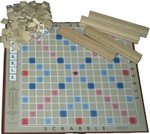I recently discovered the concept of "cargo cults" while reading about potential pitfalls in science and software development. The term surfaced after World War II. The South Pacific island natives had welcomed the valuable and more advanced cargo brought by the planes during the war. And when the war ended, the planes and cargo stopped coming to the islands. Since the locals never understood why the cargo was coming in the first place, the only thing to do from their perspective was to duplicate the previous conditions--so they built crude runways, wooden planes, bamboo radios and headphones, all in hopes of luring the planes back, and with them the cargo. Some of these ever-optimistic cargo cults persist to this day in the South Pacific.
Now that I've heard the term, I've started to see signs of cargo cults everywhere. At work, I see mixed results from efforts to put the structure of agile development in place (short iterations, Scrums, standup meetings) in some cases without a full understanding of the underlying principles of the Agile Manifesto (e.g., individuals and interactions over processes and tools, working software over comprehensive documentation, responding to change over following a plan, trusting a motivated team to get the job done). I see senior managers without a true belief in the end results possible with agile (greater opportunity to quickly respond to changing customer requirements, better quality much earlier in the process), conducting the scrum meetings with agendas they've devised but being unwilling to listen to and trust their teams enough to let them surface and resolve impediments, grow and improve together each day.
Some organizations go through the motions; they “do agile” without “being agile" and then are perplexed not see the hoped-for results. Without the willingness to trust the teams, good results can be hampered by fear-driven behavior.
If the previous jargon-filled example sounds like mumbo jumbo to you then consider my kitten, Zuni. Each morning (barring an egregious lapse by her faithful guardian), Zuni's food bowl is refilled with just enough cat food to keep her from becoming a fat little indoor cat. Who knows why it happens from Zuni's perspective, this reappearance of food, but it does happen with great regularity. On the rare morning when the bowl remains empty longer than expected, Zuni searches the house for one of her toy mice, carries it to the food bowl and sets it down. If there is no result soon, she searches the house again for a second toy mouse, sometimes placing this one inside the bowl for added emphasis. The weird thing is that this ritual does work from her perspective--eventually food appears in the bowl, and Zuni's cargo cult continues. Of course, this is my own less than scientific theory about Zuni's behavior and I have to admit therefore that the cargo cult in question may be my own.
I propose that a good number of religious activities in certain contexts are also examples of cargo cults. What cargo cults have you seen in your journeys?







